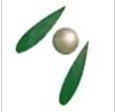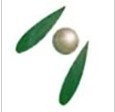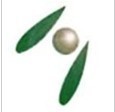
Product Description
Name Shellac
CAS Registry Number 9000-59-3
EINECS 232-549-9
Shellac is a resin secreted by the female lac bug to form a cocoon, on trees in the forests of India and Thailand.[1] It is processed and sold as dry flakes (pictured at right), which are dissolved in denatured alcohol to make liquid shellac, which is used as a brush-on colourant, food glaze[2] and wood finish much like a combination of stain and polyurethane. Shellac functions as a tough all-natural primer, sanding sealer, tannin-blocker, odor-blocker, stain (pigment), and high-gloss varnish. Shellac was also once used in electrical applications as it possesses good insulation qualities and it seals out moisture. It is also often the only historically-appropriate finish for early 20th-century hardwood floors, and wooden wall and ceiling paneling.
From the time it replaced oil and wax finishes in the 1800s, shellac was the dominant wood finish in the western world until it was replaced by nitrocellulose lacquer in the 1920s and 1930s. It remained popular in the Southern United States through the 1950s and 1960s. It continues to be a popular candy glaze for pill shaped sweets such as Skittles
Shellac is scraped from the bark of the trees where the female lac bug, Laccifer (Tachardia) lacca Kerr, Order Homoptera, Family Coccidae[3] deposits it to provide a sticky hold on the trunk. This bug or insect is in the same family as the insect from which cochineal is obtained. The insects suck the sap of the tree and excrete "stick-lac" almost constantly. The least coloured shellac is produced when the insects are parasitic upon the kursum tree, (Schleichera trijuga). The raw shellac, which contains bark shavings and lac bug parts, is placed in canvas tubes (much like long socks) and heated over a fire. This causes the shellac to liquefy, and it seeps out of the canvas leaving the bark and bug parts behind. The thick sticky shellac is then dried into a flat sheet and broken up into flakes when dried, or dried into "buttons" (pucks/cakes), and then bagged and sold. The end-user then mixes it with denatured alcohol on-site a few days prior to use in order to dissolve the flakes and make liquid shellacliquid shellac has a very limited shelf life (about 1 year), hence it is sold in dry form and then mixed prior to use. This is also why cans of liquid shellac sold in hardware stores are very clearly marked with the production (mixing) date on the top or bottom, so that the consumer can know whether the shellac inside is still good.
The thickness (strength) of shellac is measured by the unit "pound cut", referring to the amount (in pounds) of shellac flakes dissolved in a gallon of denatured alcohol. For example: a 1-lb. cut (said as "one pound cut") of shellac is the strength obtained by dissolving one pound of shellac flakes in a gallon of alcohol. A 5-lb. cut is the strength of five pounds of shellac flakes dissolved in a gallon of alcohol. Most pre-mixed commercial preparations come at a 3-lb. cut. Multiple thin layers of shellac produce a significantly better end result than a few thick layersthick layers of shellac do not adhere to the substrate or to each other well, and thus can be peeled off with relative ease; in addition, thick shellac will fill in (and thus ruin) carved designs in wood and other substrate
shellac\shellac wax\orange shellac\shellac flakes\garnet shellac\Shellac buy\shellac reviews\Shellac music\flake shellac\super blonde shellac\Shellac album\myspace shellac\Shellac albums\gifu shellac
Other Products in 'Starch Derivatives ' category
 |
A & Z Group Co.,Ltd
All Rights Reserved.(Terms of Use) Developed and Managed by Infocom Network Private Limited. |
 English
English Spanish
Spanish French
French German
German Italian
Italian Chinese (Simplified)
Chinese (Simplified) Japanese
Japanese Korean
Korean Arabic
Arabic Portuguese
Portuguese





 Send Inquiry
Send Inquiry